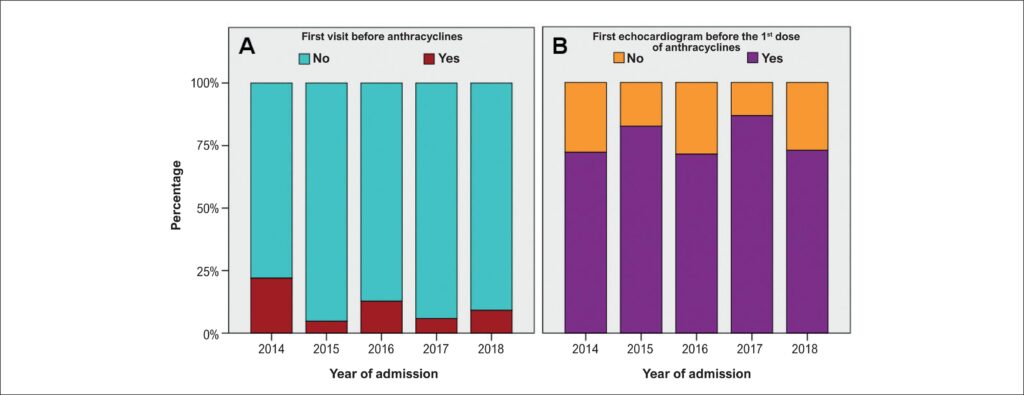Arq. Bras. Cardiol. 2024; 121(5): e20210352
Incidence of Cardiovascular Complications in Pediatric Patients Treated with Anthracyclines at a Brazilian Cancer Center
Abstract
Background:
The introduction of anthracyclines in the treatment of children and adolescents with cancer has promoted a significant increase in survival, but also in morbidity and mortality rates due to cardiovascular (CV) complications.
Objectives:
To determine the cardiovascular profile of pediatric patients treated with anthracyclines at a cancer center in Brazil and the incidence of CV complications.
Methods:
The following data were collected from the medical records of patients of both sexes, aged younger than 19 years – frequency and form of clinical presentation of general CV complications (G1) and CV complications related to ventricular dysfunction (G2) – and correlated with risk factors, age range and vital status, cardiovascular and cardioprotective medications. A p<0.05 was considered statistically significant.
Results:
A total of 326 patients were included, 214 (65.6%) were younger than 10 years and 192 (58.9%) of male sex. G1 complications occurred in 141 (43.3%) patients, and the most frequent was systemic arterial hypertension; G2 complications occurred in 84 patients (25.8%). Cumulative dose (CD) of anthracyclines > 250mg/m2 was used in 26.7% of patients and the association of G2 complications with this CD was not statistically significant (p=0.305; OR=1.330 and [95% CI = 0.770- 2.296]). The most used cardiac medications were diuretics (34.7% of patients).
Conclusions:
In accordance with literature, the study showed a high incidence of CV complications in the treatment of children and adolescents with cancer, with general CV complications as the most prevalent.
Keywords: Anthracyclines; Cardiotoxicity; Child; Drug Therapy; Neoplasms
475

